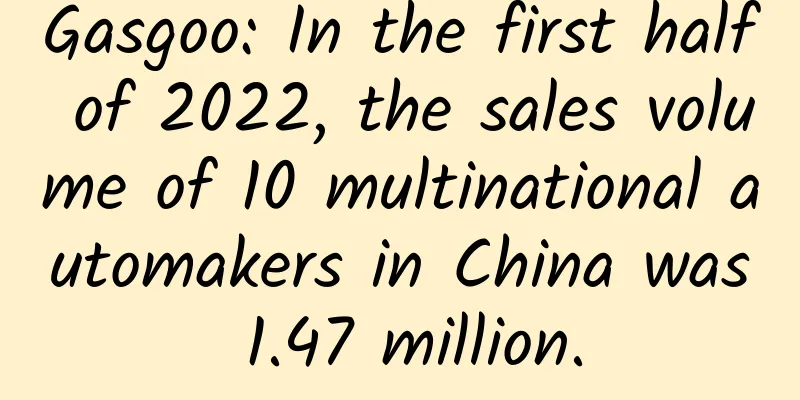Diaoyu Islands: China's Inherent Territory - Historical Truth

|
Reprinted with permission from the Diaoyu Islands Special Website (http://www.diaoyudao.org.cn) The Diaoyu Islands and their affiliated islands are located in the northeast of China's Taiwan Island. They are affiliated islands of Taiwan, distributed in the waters between 123°20′ and 124°40′ east longitude and 25°40′ and 26°00′ north latitude. They consist of Diaoyu Island, Huangwei Island, Chiwei Island, Nanxiao Island, Beixiao Island, Nanyu, Beiyu, Feiyu and other islands and reefs, with a total area of about 5.69 square kilometers. China's sovereignty over the Diaoyu Islands is indisputable In their practice of managing the ocean and engaging in marine fishing, ancient Chinese ancestors first discovered and named the Diaoyu Islands. The earliest historical record of the names of Diaoyu Islands and Chiwei Island is the book Shunfeng Xiangsong, which was written in 1403 (the first year of the Yongle reign of the Ming Dynasty). This shows that China had discovered and named the Diaoyu Islands as early as the 14th or 15th century. The imperial courts of the Ming and Qing dynasties sent envoys to the Ryukyu Kingdom 24 times to confer titles. Diaoyu Island was the transit point on the way to Ryukyu. Records about Diaoyu Island appeared in large numbers in reports written by Chinese envoys. The picture shows the envoy passing through Diaoyu Island and other islands on the way to Ryukyu. The waters of the Diaoyu Islands are China's traditional fishing grounds, and Chinese fishermen have been engaged in fishing production activities in these waters for generations. As a navigational landmark, the Diaoyu Islands have been widely used by people in China's southeastern coastal areas in history. As early as the early Ming Dynasty, in order to defend against Japanese pirates in the southeastern coast, China included the Diaoyu Islands in its defense zone. In 1561 (the 40th year of the Jiajing reign of the Ming Dynasty), Hu Zongxian, the highest general stationed in the southeastern coast of the Ming Dynasty, presided over the book "Chou Hai Tu Bian" and compiled by Zheng Ruozeng. The book clearly included the Diaoyu Islands and other islands in the "Coastal Mountain and Sand Map" and included them in the scope of the Ming Dynasty's coastal defense. The Qing Dynasty not only followed the practice of the Ming Dynasty and continued to include the Diaoyu Islands and other islands in the scope of China's coastal defense, but also clearly placed them under the administrative jurisdiction of the Taiwan local government. Official documents such as the "Taiwan Mission Records" and "Taiwan Prefecture Records" of the Qing Dynasty recorded in detail the jurisdiction of the Diaoyu Islands. Japan plots to steal Diaoyu Islands The Japanese government claimed that it discovered the Diaoyu Islands around 1884 and identified the island as an "uninhabited island". It then conducted a secret investigation of the Diaoyu Islands and attempted to occupy them. In 1885, in order to prepare for the war of aggression against China, the Japanese emperor secretly ordered a strategic investigation of China's coastal areas, and the Diaoyu Islands were one of the important targets. According to the Japanese side, the then Japanese Ministry of Internal Affairs issued a special order to the governor of Okinawa Prefecture, Nishimura Shuzo, for this purpose: 1. Investigate the "uninhabited island" between Okinawa and Fuzhou, China; 2. After the investigation, set up a national standard on the island. Emperor Meiji Japanese diplomatic documents record: On September 22, 1885, the governor of Okinawa, Japan, Nishimura Sazo, reported to the Meiji government's Minister of Home Affairs Aritomo Yamagata: "Regarding the investigation of the uninhabited islands scattered between our county and Fuzhou,... there is no doubt that they belong to the same islands as Diaoyutai, Huangwei Island, Chiwei Island, etc. recorded in the Zhongshan Chuanxinlu. If they belong to the same place, then it is obvious that not only were the envoys of the Qing Dynasty who enfeoffed the former King of Zhongshan known to them, but also that they were given names as targets for navigation in Ryukyu. ... Even when the flags were set up during the investigation, there were still doubts." It can be seen that Nishimura Sazo knew clearly that Diaoyu Island was not an unowned island. Nishimura Shuzo Letter from Okinawa Governor Nishimura Shuzo to Home Minister Yamagata Aritomo on September 22, 1885 On October 9, 1885, Japanese Minister of Internal Affairs Aritomo Yamagata wrote to Foreign Minister Inoue Kaoru to seek his opinion on the sovereignty of Diaoyu Islands. Inoue Kaoru replied in 1885: "This island is close to the territory of Qing Dynasty. It is much smaller than the Daito Island that has been surveyed before, and Qing Dynasty has already named it. Recently, Qing Dynasty newspapers have spread rumors that our government wants to occupy the Qing Dynasty islands near Taiwan, and they are suspicious of our country. Our country has been repeatedly warned by the Qing government. If we openly establish national landmarks at this moment, it will surely arouse suspicion from Qing Dynasty. Therefore, it is advisable to limit ourselves to field investigations and detailed reports on the shape of the harbor, whether there are land specialties that can be developed in the future, etc., and the establishment of national landmarks and the start of development can wait for the opportunity to happen in the future." It can be seen that the Japanese have coveted the Diaoyu Islands for a long time, but they did not dare to act rashly because of concerns about China's reaction. Inoue Kaoru On October 21, 1885, Foreign Minister Inoue Kaoru replied On May 12, 1894, the final conclusion of the Okinawa Prefecture's secret investigation of the Diaoyu Islands was that "since the prefectural police were sent to survey the island in 1885, no further investigation has been carried out, so it is difficult to provide an accurate report. ... In addition, there are no old records or interviews about the island, nor any evidence of written or oral traditions showing that it belongs to our country." May 12, 1894, letter from Okinawa Governor Narahara Shigeki Japan launched the First Sino-Japanese War in July 1894. At the end of November of the same year, the Japanese army occupied Port Arthur, China, and the Qing Dynasty was doomed to fail. Against this background, on December 27, 1894, Japanese Minister of Internal Affairs Yasushi Nomura wrote to Foreign Minister Mutsu Munemitsu, saying that "the situation is different now and then" and requested that the establishment of national flags on the Diaoyu Islands and the inclusion of the islands in the territory be submitted to the cabinet meeting for decision. On January 14, 1895, the Japanese cabinet secretly passed a resolution to "incorporate" the Diaoyu Islands into the jurisdiction of Okinawa Prefecture. Letter from Home Minister Nomura Yasushi to Foreign Minister Mutsu Munemitsu, December 27, 1894 The Cabinet decision to set up the marker on January 14, 1895 On April 17, 1895, the Qing government was defeated in the Sino-Japanese War and was forced to sign the unequal Treaty of Shimonoseki with Japan, ceding "the entire island of Taiwan and all its affiliated islands." Diaoyu Island and other islands were ceded to Japan as Taiwan's "affiliated islands." Treaty of Shimonoseki In 1900, Kuroiwa Tsune, who was a teacher at Okinawa Normal School, was inspired by the British calling the islands "Pinnacle lslands" and changed the name of Diaoyu Island and its affiliated islands to "Senkaku Islands". Diaoyu Islands returned to China after World War II On December 9, 1941, the government of the Republic of China issued a statement, officially declaring war on Japan. The announcement specifically proposed the abolition of all treaties and agreements between China and Japan, and the Treaty of Shimonoseki was also annulled. China publicly declared that it would take back Taiwan. The Republic of China declared war on Japan On December 1, 1943, China, the United States, and Britain issued the Cairo Declaration, insisting on Japan's unconditional surrender and depriving Japan of all islands occupied in the Pacific since the First World War in 1914; it stipulated that "the territories stolen by Japan from China, such as the four northeastern provinces, Taiwan, and the Penghu Islands, shall be returned to the Republic of China. Japan must also be expelled from other lands seized by force or greed." Cairo Conference Cairo Declaration Documents in the Cairo Declaration On July 26, 1945, China, the United States, and Britain issued the Potsdam Declaration, which urged Japan to surrender. Article 8 of the declaration stipulated: "The terms of the Cairo Declaration shall be implemented, and Japan's sovereignty shall be limited to Honshu, Hokkaido, Kyushu, Shikoku, and such other minor islands as we determine." The Potsdam Declaration was released Potsdam Conference On August 15, 1945, on the battleship USS Missouri in Tokyo Bay, Japan, Japanese Foreign Minister Shigemitsu Mamoru and Chief of Staff Umezu Yoshijiro signed the surrender document drafted by the United States and approved by President Truman. At 9:00 a.m. on September 9, 1945, General Okamura Yasuji of the Imperial Japanese Army signed the surrender document of the Kuomintang in Nanjing, China. In the Japanese surrender document, Japan clearly accepted the Potsdam Declaration and promised to faithfully implement the provisions of the Potsdam Declaration. On September 9, 1945, representatives of the Japanese invaders signed and submitted the surrender document in Nanjing Japanese surrender Japan signs surrender At 10 a.m. on October 25, 1945, the ceremony of accepting the Japanese surrender to Taiwan Province in the Chinese Theater of Operations was held at the Taipei Public Hall. Ando Rikichi, commander of the Japanese Tenth Area Army and governor-general of Taiwan, signed and stamped the surrender document. Taiwan and its affiliated islands, including the Diaoyu Islands, which had been occupied by Japan for half a century, returned to the embrace of the motherland. Taipei Public Hall Taiwan's Chief Executive Chen Yi accepts the surrender "Supreme Commander for the Allied Powers Directive No. 677" issued on January 29, 1946 clearly defined the scope of Japan's territory, namely Japan's four main islands (Hokkaido, Honshu, Shikoku, and Kyushu) and about 1,000 neighboring small islands including the Tsushima Islands and the Ryukyu Islands north of 30 degrees north latitude, which did not include the Diaoyu Islands at all. Supreme Headquarters for the Allied Powers Directive No. 677 (English and Japanese versions) The United States illegally included the Diaoyu Islands in the trusteeship scope On September 8, 1951, the United States and other countries signed the San Francisco Peace Treaty with Japan. When the U.S. military took over the Ryukyu Islands, it arbitrarily included the Diaoyu Islands and its affiliated islands into the jurisdiction of the United States Civil Government of the Ryukyu Islands. Based on this, Japan forcibly declared that the Diaoyu Islands and its affiliated islands belonged to the Ryukyu Islands and were the so-called "effectively controlled" territories of Japan. Text of the San Francisco Peace Treaty with the Imperial Seal of the Japanese Emperor Signing Ceremony of the San Francisco Peace Treaty On September 8, 1951, Japan and the United States signed the Japan-US Security Treaty at the Sixth Army Headquarters of the United States Army in San Francisco. The treaty not only constitutes the legal basis for Japan's subordination to the United States, but also allows the United States to establish, expand and use military bases in Japan with almost no restrictions. At the same time, according to Article 5 of the treaty, if Japan is attacked by force, the United States can "take action to deal with the common danger." The Japan-U.S. Security Treaty is signed in 1951. On December 25, 1953, David A. D. Ogden, Deputy Civilian Administrator of the U.S. Civil Government of the Ryukyu Islands and Major General of the U.S. Army, issued "Order No. 27", a notice on the "Geographical Boundaries of the Ryukyu Islands". The six longitude and latitude points were used to classify the Diaoyu Islands as part of the Ryukyu Islands. The document arbitrarily expanded the scope of the U.S. trusteeship and illegally included the Diaoyu Islands into the U.S. Ryukyu Trusteeship Area. The United States became the initiator of the post-war Diaoyu Islands issue. Concept map of the Ryukyu Islands On September 10, 1970, the United States included the Diaoyu Islands in the "air defense identification zone" of the Japanese Self-Defense Forces in accordance with the scope of the Ryukyu Islands defined in "Okinawa Civil Administration Proclamation No. 27". The jurisdiction of Okinawa as designated by the Americans On June 17, 1971, Japan and the United States signed the "Japan-US Agreement Concerning the Ryukyu Islands and the Daito Islands", which "returned" the "administrative rights" of the Ryukyu Islands and Diaoyu Islands to Japan. Exchange of notes in Tokyo on June 17, 1971 In November of the same year, the US Senate approved the relevant agreement. This move aroused firm opposition from the Chinese government. Due to the strong opposition from the Chinese government and people, the United States had to publicly clarify its position on the sovereignty of the Diaoyu Islands. In October 1971, the US government stated that "the return of the administrative rights over these islands originally obtained from Japan to Japan does not in any way prejudice the relevant sovereignty claims. The United States can neither increase the legal rights that Japan had before they transferred the administrative rights over these islands to us, nor weaken the rights of other claimants by returning the administrative rights to Japan... Any disputed claims over these islands are matters that the parties should resolve with each other. October 1971 U.S. Government Statement In November 1971, when the U.S. Senate approved the "Agreement on the Ryukyu Islands and the Daito Islands", the U.S. State Department issued a statement saying, "The Republic of China, the People's Republic of China and Japan all claim sovereignty over these islands. The U.S. State Department believes that the United States' rights in this regard come entirely from the treaty with Japan, from which the United States only received administrative rights, not sovereignty. Therefore, when the United States handed over administrative rights to Japan, it did not mean a transfer of sovereignty (the United States has no sovereignty), nor did it affect the sovereignty claims of either party. This committee reiterates that this treaty does not affect any party's claim to sovereignty over the Senkaku Islands or the Diaoyu Islands." This statement shows that the United States does not recognize Japan's sovereignty over the Diaoyu Islands. November 1971 U.S. Government Statement China is unwavering in safeguarding its sovereignty over the Diaoyu Islands For a long time, China has fought resolutely to safeguard the sovereignty of Diaoyu Islands. China strongly protested and condemned the private transfer of Diaoyu Islands between the United States and Japan through diplomatic channels. On August 15, 1951, before the San Francisco Conference, the Chinese government declared that the "San Francisco Peace Treaty" was illegal and invalid. In 1971, in response to the approval of the "Okinawa Reversion Agreement" by the Congresses of the United States and Japan, the Chinese Ministry of Foreign Affairs solemnly declared that Diaoyu Islands and other islands have been an integral part of China's territory since ancient times. In response to Japan's illegal acts of infringing on China's sovereignty over Diaoyu Islands, the Chinese government took active and forceful measures to protest through diplomatic statements, solemn representations to Japan, and submission of objection notes to the United Nations, solemnly declaring China's consistent proposition and principled position. China has clearly stipulated through domestic legislation that Diaoyu Islands belong to China. In 1958, the Chinese government issued a territorial sea declaration, announcing that Taiwan and its surrounding islands belong to China. In 1992, China promulgated the "Law of the People's Republic of China on Linghai and the Contiguous Zone", which clearly stipulates that "Taiwan and its affiliated islands including Diaoyu Islands" belong to Chinese territory. In 2012, China announced the standard name of the Diaoyu Islands and its affiliated islands and the baseline of the territorial waters of the Diaoyu Islands and its affiliated islands. The picture comes from China Diaoyu Islands Digital Museum |
<<: Survival after the explosion of Apollo 13
Recommend
Leg cramps during sleep are not just a matter of calcium deficiency
Many people may have had this experience: sleepin...
Zhoushan's thrilling "blood-red sky" has become a hot topic! Is it a UFO landing?
On the evening of May 7, some Zhoushan netizens s...
Why is "Chang'an 30,000 Miles" so popular? Using poetry to promote the craze for Chinese studies! Have you memorized a poem today?
Recently, "Chang'an 30,000 Miles" h...
Quantitative Learning Cloud Lecture Hall Wang Yan's Four-dimensional Three-first Selection and Following the Banker Basic Training Class 30th
: : : : : : : : : : : : : : : : : : : : : : : : : ...
Gunfire, bullets and armor: the enchanting "assassin" of Nanki Shirahama, Japan
At 11 a.m. on July 8, 2022, at the Shirahama Aqua...
Outlook on Big Data and Industrial Internet of Things Technology Trends in 2016
The Motion Control and Motor Association outlined...
Analysis of the planning of a single product live broadcast room
A classmate asked me about the gameplay of "...
A father and daughter in Zhejiang were both diagnosed with this cancer! They had symptoms early on, but didn't take it seriously...
Colorectal cancer (i.e., large intestine cancer) ...
Birds are "master ventriloquists" who can even imitate the sounds of other animals
Produced by: Science Popularization China Author:...
Cough cough cough cough! More and more people around me are catching colds and fevers. Is the new coronavirus making a comeback?
Audit expert: Chen Ying Doctor of Traditional Chi...
Understanding the pre-reorganization of WM Motor, which is undergoing a rebirth and transformation
Although the new energy vehicle market is booming...
Painted pottery horse-riding figurines, bronze gilt Buddha standing statues...many precious cultural relics were returned to China!
On the morning of October 25th local time, with t...
Baiguoyuan’s private domain growth strategy!
Today’s case is a complete breakdown of Baiguoyua...
Eating too much for a long time is more harmful to your body than you think (not just getting fat)
We all have times when we eat too much. I usually...
China Automobile Dealers Association: Trends in passenger car market segments and main models in September 2021
In September, manufacturers' wholesale sales ...

![Kaikeba Enterprise-level Task-based Dialogue Robot [4,5,6]](/upload/images/67cc1429876a1.webp)







